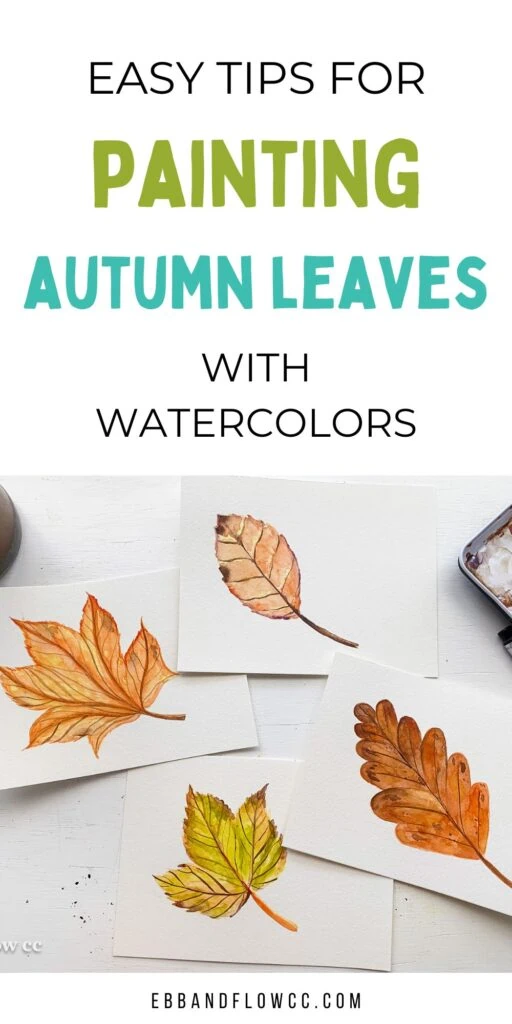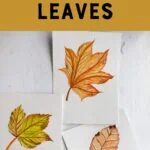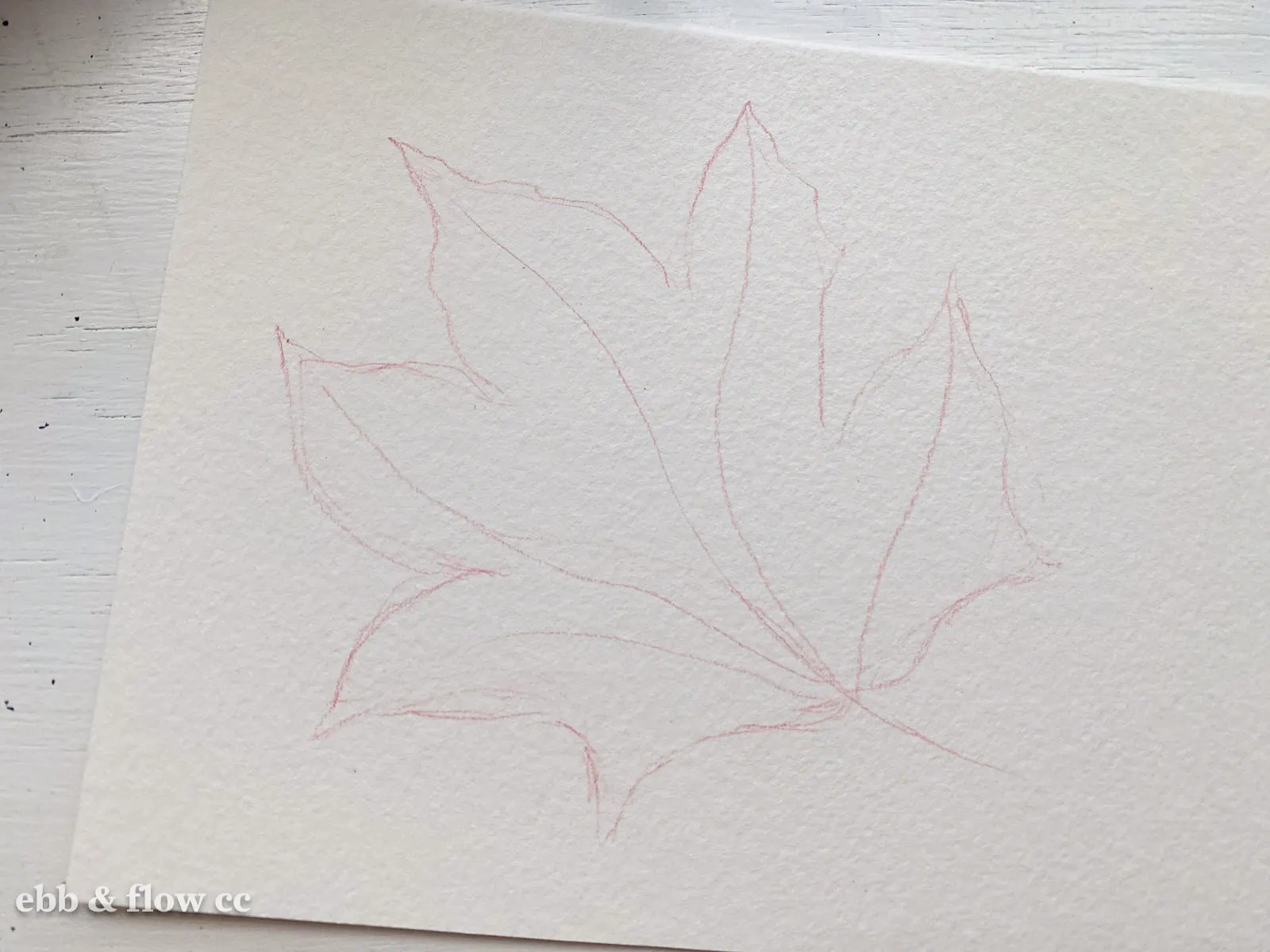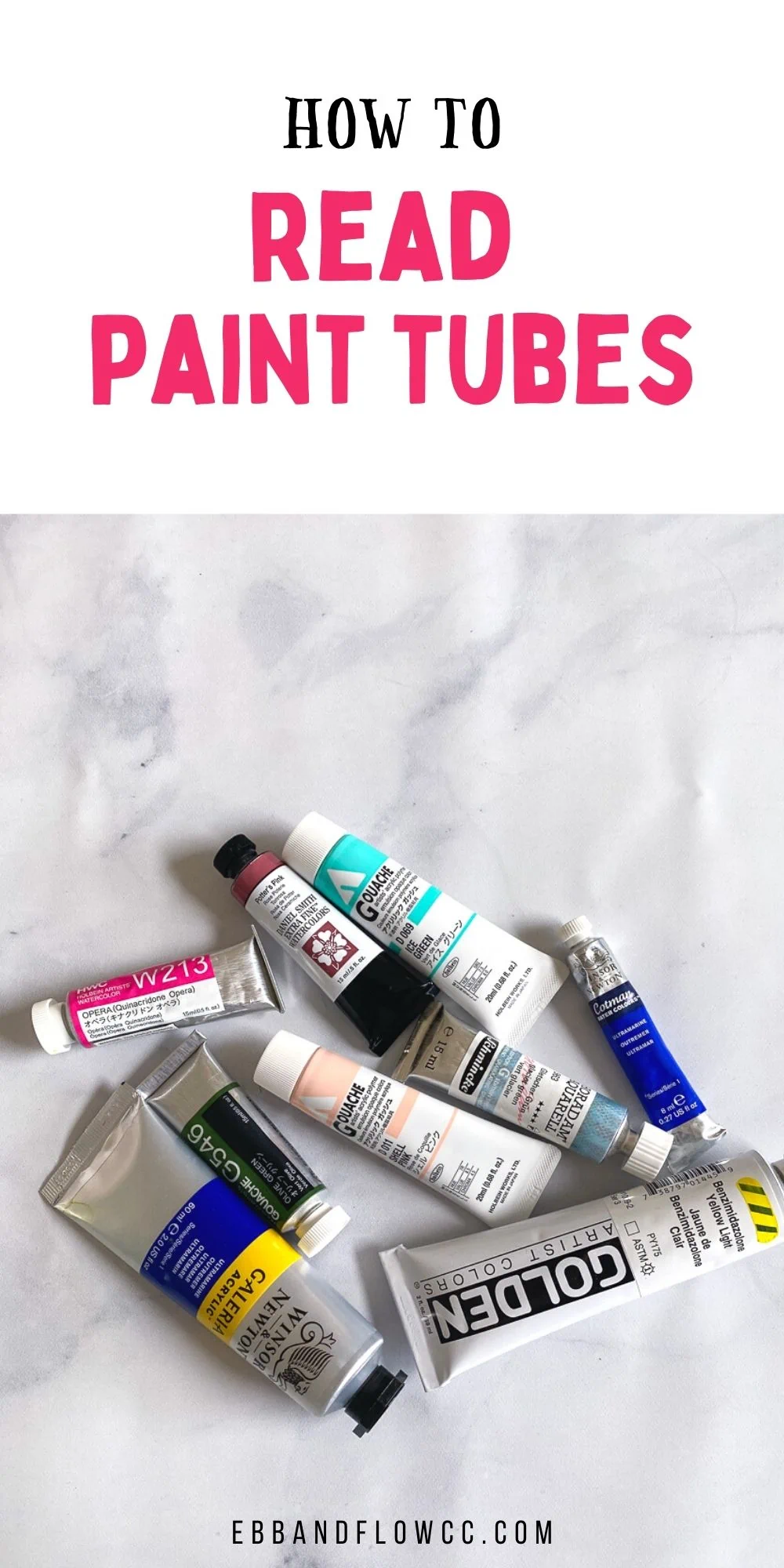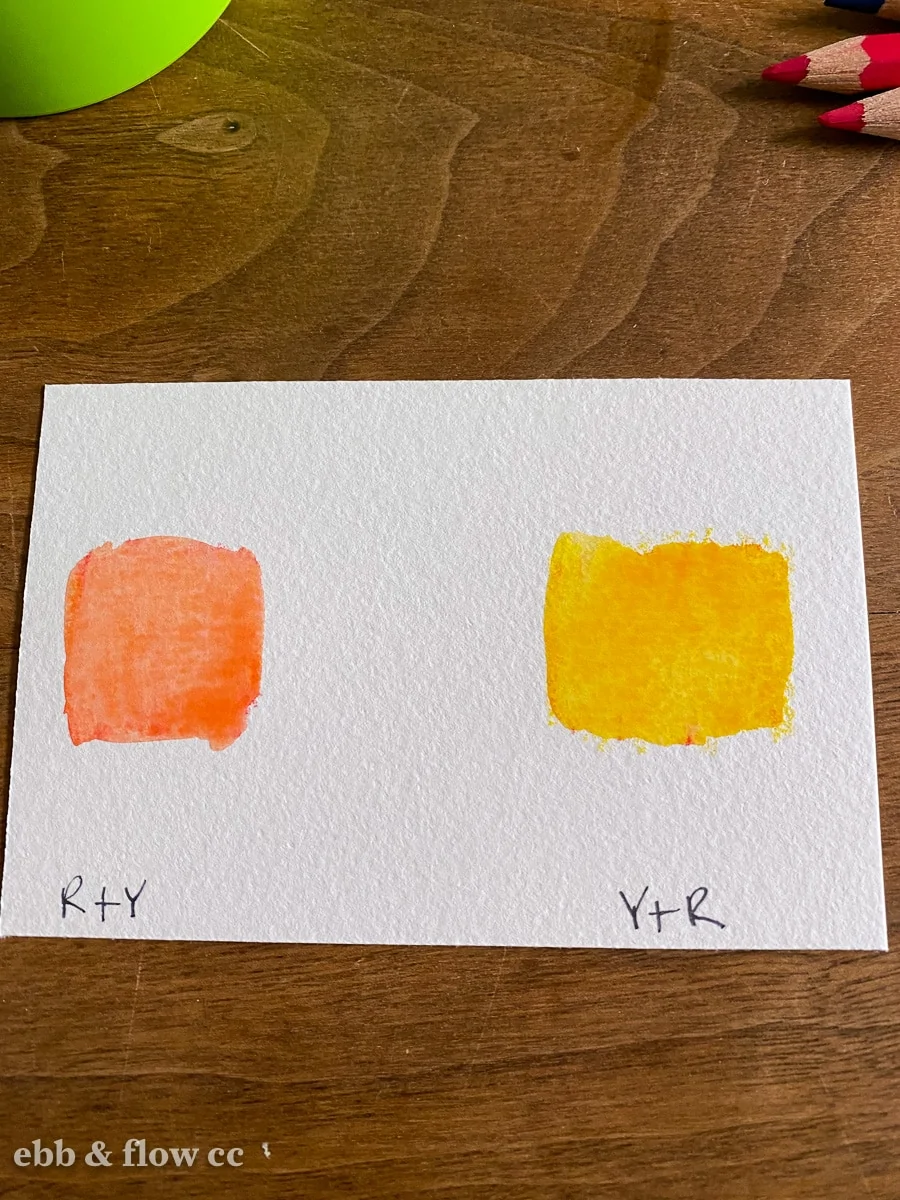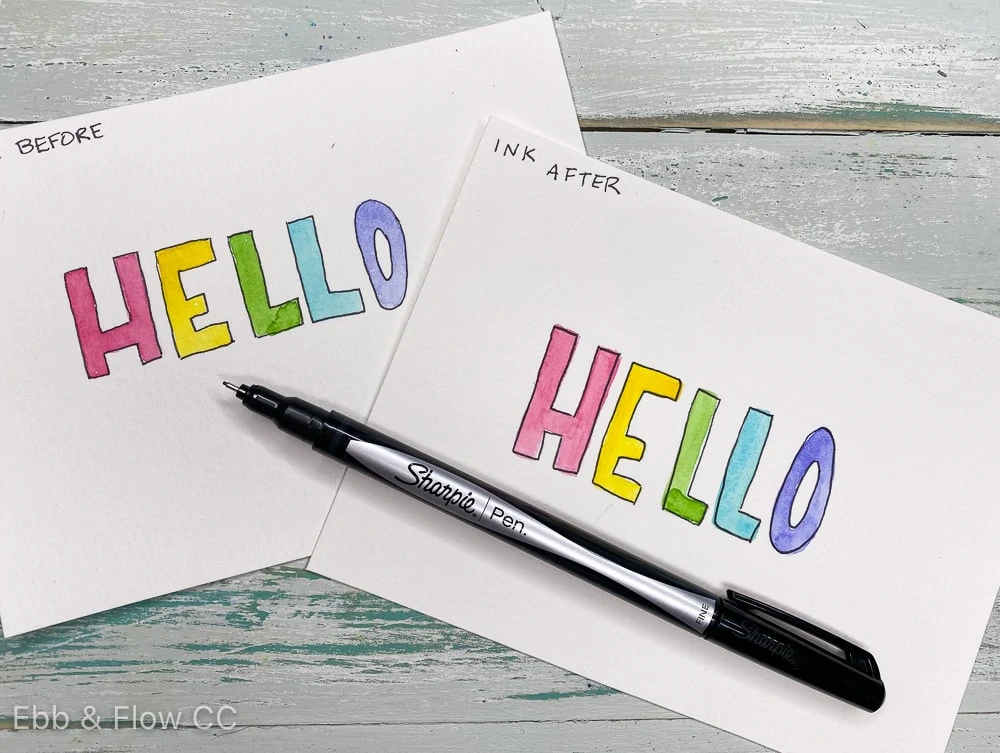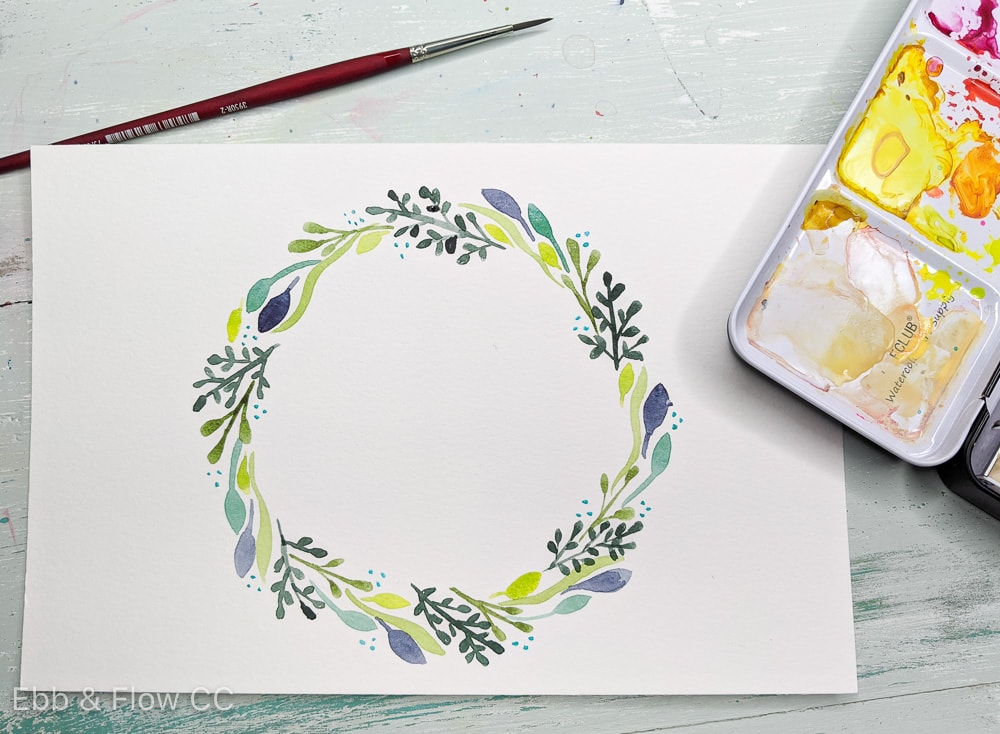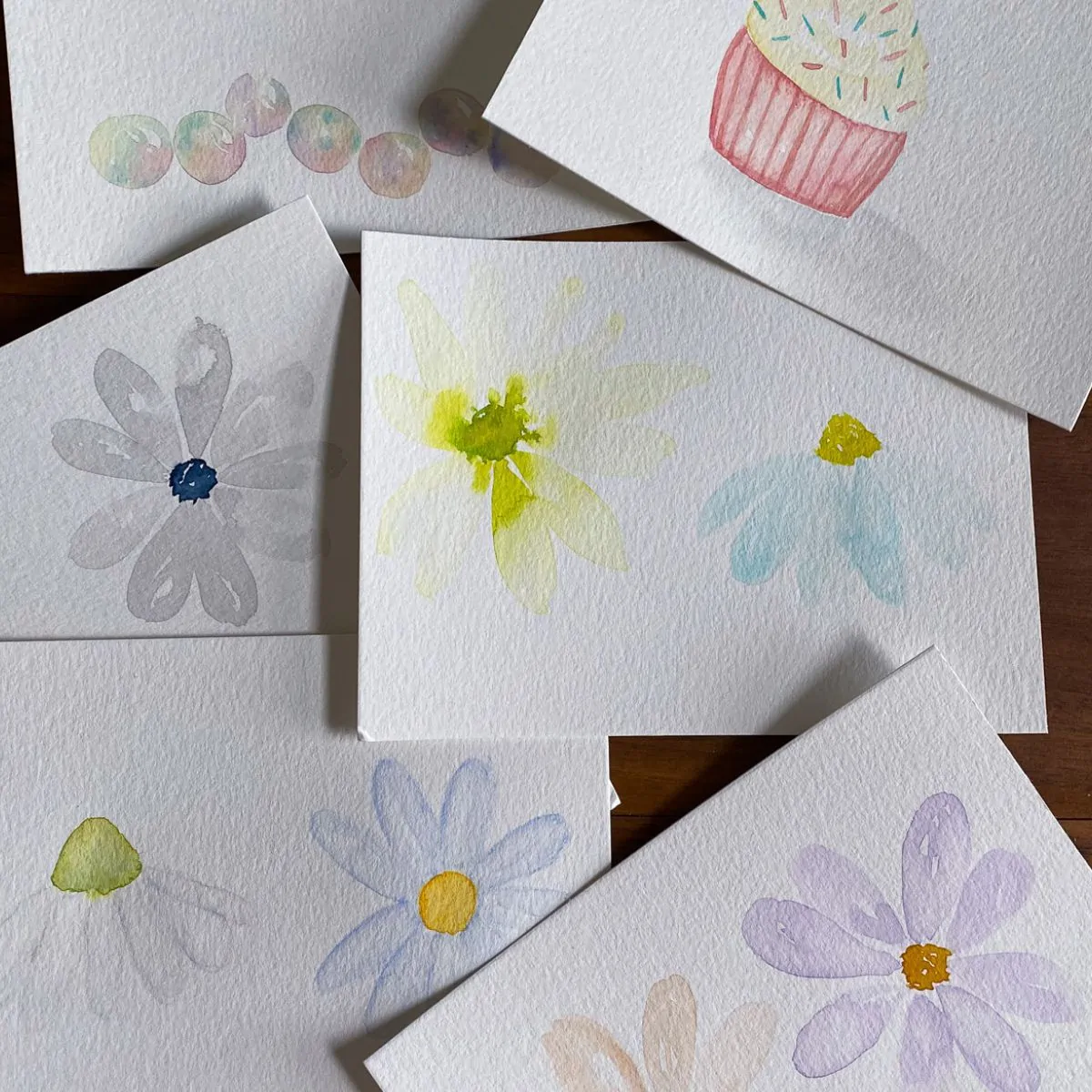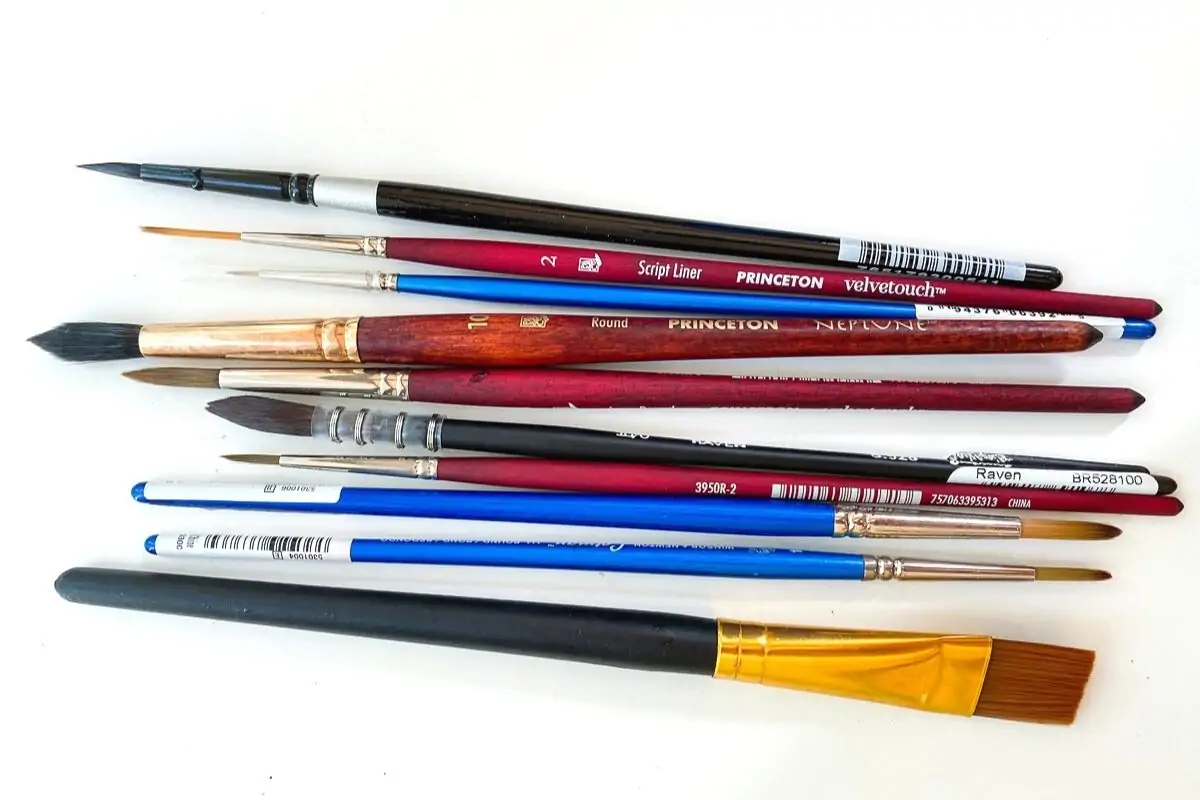How to Paint Watercolor Fall Leaves for Beginners
Get easy tips to paint watercolor fall leaves. This simplified painting tutorial is perfect for beginning painters. These leaves feature a wet-on-wet blending technique to create the mottled look of fall leaves. Details with a small paintbrush make the leaves come to life.
If you’re new to watercolors, be sure to check out my other watercolor posts.
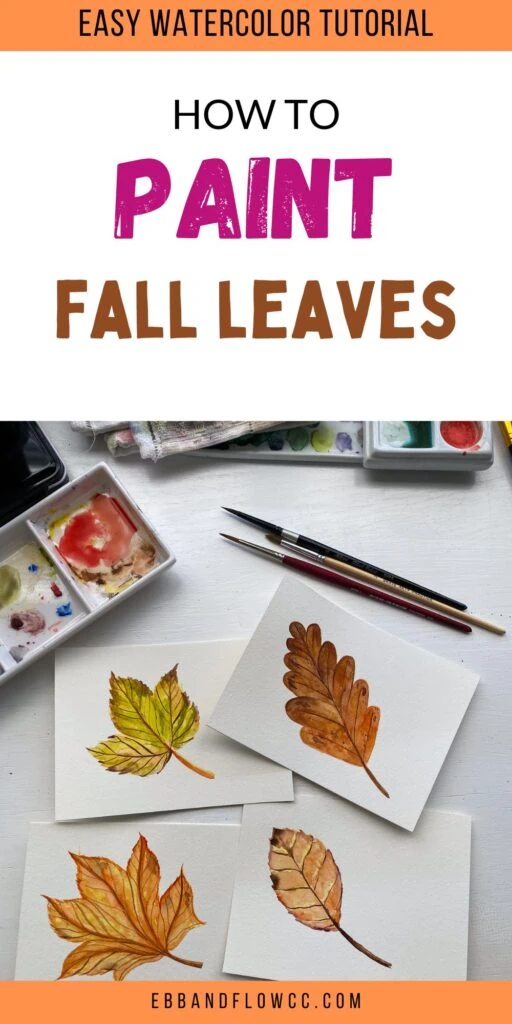
This post contains affiliate links. By purchasing an item through an affiliate link, I earn a small commission at no extra cost to you. As an Amazon Associate I earn from qualifying purchases.
One of the things I miss most about Maryland is the fall leaves. Our house was surrounded by a forest and the trees were so gorgeous in the Autumn.
We don’t get a fall in Florida, so these are the only leaves I’ll be seeing.
How to Paint Watercolor Fall Leaves
Supplies Needed:
- Watercolor Paint
- Watercolor Brushes (I used a round size 4 and a size 0 brush for the details.)
- Watercolor Paper
- Water
- Mixing Palette
- Paper towels
- Leaf template (Printable leaf outlines available at the end of this post)
Learn more about my favorite watercolor supplies here.
Recommended Paint Colors for Painting Fall Leaves
Primary paint colors are fine if you’re starting out. Stick with the warmer tones when mixing to create warmer colors. Learn more about color theory here.
I used this set from Daniel Smith, but only the warm colors: Pyrrol scarlet, Hansa yellow light, and French ultramarine.

Add ultramarine to neutralize colors that feel too bright. A tiny amount goes a long way.
If you have more paint colors, orange, warm yellow, and brown will work. Here are my other favorite colors for painting fall leaves. Most of the paint is Schminke, besides the green gold and the rose of ultramarine, which are both Daniel Smith. Most brands carry these colors or similar colors though.
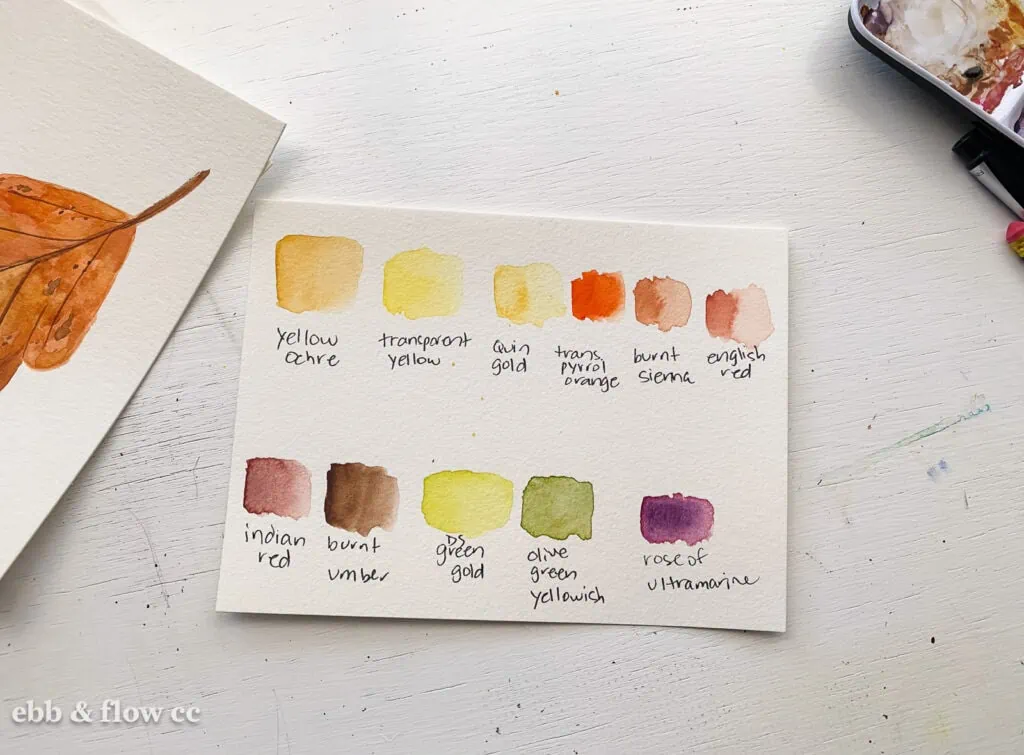
I know the rose of ultramarine looks out of place, but it looks pretty when mixed with burnt sienna. The green gold looks a bit crazy too, but it’s easy to tone it down with a warm yellow or brown.
Directions
There are so many trees that change color in the fall. If you don’t see you’re favorite leaf here, you can check out sites like Pexels to find inspiration for your own paintings.

They all follow the same format. Paint the whole leaf a color either orange or yellow. Then add in more warm colors. Add brown to the edges. Then add in age spots. Finally, add in the stem and veins with a smaller paintbrush.
How to Paint a Birch Leaf
- Sketch out the shape of a birch leaf. It’s shaped like an oval with pointy ends.
- Lightly erase the sketch so that it doesn’t show through.
- Paint the shape yellow.
- As you paint around the edges, add jagged edges.
- While the paint is wet, add the vein with orange paint.
- Add the leaf sections, leaving yellow lines between the areas.
- Add brown paint to the edges to make the leaf look crispy. Soften any hard lines with a damp brush.
- Use the brown paint to add the stem.
- Layer more orange paint over the leaf sections, blending them with the brown edges.
- Use brown paint to add a few age spots around the edges.
- Paint the stem and leaf veins using a small paintbrush.
How to Paint a Maple Leaf
- Sketch out a maple leaf. A maple leaf has 5 main sections, with the top 3 being larger than the bottom 2.
- Paint the shape with yellow paint.
- While the leaf is wet, add orange paint to the edges and the larger veins.
- Soften any harsh lines and add more orange.
- Use brown paint to add veins and age spots.
- Add ragged edges with orange paint.
- Use a small paintbrush to paint the stem and veins.
How to Paint an Oak Leaf
- Draw out an oak leaf. Oak leaves have rounded edges.
- Paint the leaf with orange paint.
- Add brown paint to the top of the leaf.
- Keep adding brown paint, blending it with more orange paint.
- Add brown age spots and a stem.
- Use a small paintbrush to paint the veins.
How to Paint a Sycamore Leaf
I used Daniel Smith green gold for this tutorial, but any warm green will work. Sap green is also a good choice. Or mix your own warm green.
(Note: The progress photos I took ended up blurry, so I had to paint this twice. If you notice differences, that’s why.)
- Sketch out the sycamore leaf. A sycamore has 3 sections that point up.
- Fill the shape with yellow paint.
- Use the tip of the brush to add jagged edges.
- While the paint is wet, add green paint to the leaf.
- Drop in orange around a few edges and the center of a leaf section.
- Paint brown around most of the edges and paint the stem.
- Add more green paint around the center of the leaf.
- Use diluted brown paint to add in the main veins.
- Let the paint dry before using a small paintbrush to paint the veins.
Tips for Painting Fall Leaves with Watercolor
- Always start with the lightest color first. I like to paint my leaves with diluted yellow or orange paint for the basecoat. It makes the leaves glow.
- Drop in other colors while the paint is wet. This helps blend the paint colors on the leaves.
- Make the paint pool around the edges to create darker edges. This makes the leaf look more realistic.
- The edges shouldn’t be smooth. As the leaves age, they get crispier and the edges get more ragged. I like to add in the rough edges as I go. You can use the tip of the brush to create jagged points.
- If it looks unfinished, it probably is. Add more details like brown spots to show age and lines for the leaf veins.
- If the lines are too harsh, soften them with a damp brush.
You Might Also Like:
- How to Mix Orange Paint with Watercolor
- Watercolor Pumpkin Painting Tutorial
- Watercolor Warm-Up Ideas
Printable Fall Leaves to Trace
I’m providing a printable PDF of fall leaves for you to trace onto watercolor paper. There are a few ways to do this. You can use a lightbox or even tape the papers to a window. You can also use graphite transfer paper.
If you’re up for it, use the leaf shapes as references and draw your own.
These downloads are for personal use only. Please do not redistribute or sell.
Dear teachers and students: this download will not work if you try to access it when logged into your school email account. Try a personal email account instead.

Pin for Later!
